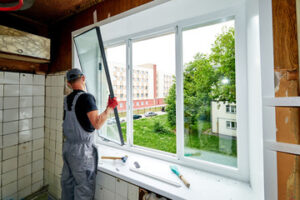Liquid Waste Removal comes from many sources, including chemical and sanitary products used by residential and commercial businesses. It must be handled properly to avoid environmental harm. Untreated or improperly disposed of, it can pollute surface and groundwater supplies and cause diseases in humans and animals.
It would be best to always have well-labeled bins for different types of liquid waste. Be sure to use a lid that secures the bin.

Sedimentation is a natural process in which solid particles suspended in a liquid slowly sink and settle over time, forming a sediment layer. This is a critical geological and environmental process that shapes the Earth’s landscape. Sedimentation tanks are also used to separate suspended matter from water, resulting in cleaner and clearer drinking water.
A sedimentation tank uses a system of baffles to reduce the velocity of the wastewater as it flows through it, which makes the settling process much faster. The water then passes through several additional filtration processes. This sedimentation water treatment helps to remove harmful bacteria, viruses, fungus, and other microorganisms from the water supply, making it safer for consumption.
Liquid waste can contain a variety of substances, including chemical pollutants, oily sludge and organic matter. When these contaminants are discharged into the environment, they can seep into soil and change its chemical composition, harming animals and plants or disrupting the balance of aquatic ecosystems. Waste fluids can also contaminate groundwater and surface water sources, posing a health risk to people, livestock and marine organisms.
To prevent these risks, liquid waste disposal must take place according to strict guidelines. This includes using sedimentation water treatment to remove any toxic substances from the waste stream before it enters rivers, lakes, oceans or other bodies of water.
There are a number of different methods for sedimentation, which depend on the type of liquid waste and the desired outcome. Some examples include dissolved air flotation, ballasted sedimentation and floc blanket sedimentation. In these processes, high molecular weight polyelectrolytes are used to increase particle density and promote separation.
When sedimentation is used prior to coagulation, it helps to reduce the amount of coagulating chemicals required. This can help to save both energy and money in a water treatment facility. Sedimentation can also be used after coagulation and flocculation to further reduce the concentration of suspended particles in a water treatment plant, making subsequent filtration easier. This method is particularly effective when used in combination with dissolved air flotation.
Dewatering
In addition to separating solids from liquid waste, dewatering can also help reduce the volume of the waste material, making it easier for businesses to transport. The process involves removing water from the waste, which can be done through physical treatment or by adding an amendment to the material. This helps to reduce the amount of waste that needs to be sent to a landfill or can be used to make a new product.
Liquid waste comes from a variety of sources, including stormwater runoff, sewage and chemicals, industrial waste, and other substances. The proper disposal of these materials is crucial for preserving the environment and ensuring public safety. If liquid waste isn’t disposed of properly, it can contaminate the surrounding soil or water supply. This can damage crops, change the chemical composition of water, and hurt animals and people who drink the contaminated water.
If you produce or use liquid waste, it is important to understand the processes and regulations that surround this type of waste. Failure to follow these guidelines can have serious legal consequences. If you are concerned about the environmental impact of your business, consider working with a company that provides liquid waste management services.
When a company handles your liquid waste, it will take special care to ensure that the waste isn’t contaminated with harmful substances. It will take steps to prevent leakage of toxins into groundwater or surface water sources, which can be dangerous for wildlife and human health. It will also ensure that the waste doesn’t contaminate water that is being used for farming or drinking.
In addition, the company will ensure that the disposal site is far away from any well water sources in the area. This will protect the local community’s drinking water supply and prevent any contamination. The company will also keep the site away from any surface water sources, as this can cause a hazardous runoff into the water.
Another option for destroying liquid waste is incineration. This method is controversial, as it produces toxic contaminants and greenhouse gases. However, it is an effective way to destroy liquid waste quickly and efficiently. In order to incinerate liquid waste safely, it is essential to dewater the waste before it is placed in an incinerator.
Separation
Whether in the form of toxic chemicals, hazardous materials or industrial waste, liquid waste must be treated and disposed of properly. Improper handling can lead to water, soil and air contamination, which poses a threat to human health, animal life and ecosystems. Liquid waste management is an important part of any production or manufacturing process. Proper management also prevents the risk of environmental damage, allowing companies to operate safely and responsibly.
Nonhazardous liquid waste often contains valuable nutrients such as nitrogen, potassium and sodium. These elements can be recycled into organic fertilizers and used to help crops and plants grow. Facilities that use this method of disposal are able to avoid landfills and reduce their carbon footprint.
Hazardous liquid waste typically contains pathogens that are dangerous to human health and can spread diseases, such as cholera, typhoid and dysentery. When they seep into groundwater or surface water, they can contaminate drinking supplies and cause long-term health problems. In addition, contaminated water can pollute the environment by changing its chemical composition and disrupting the natural balance of aquatic ecosystems.
Liquid waste removal methods vary depending on the type of waste, but many involve separation of solid and liquid waste. This process removes water from solid waste using centrifuges, belt filters, plate and frame filters, or vacuum systems. The resulting solid waste is then deposited in a composting facility to be turned into fertilizer or a landfill, depending on its composition.
Other disposal techniques for liquid waste include land application, incineration and deep-well injection. However, incineration is often considered a last resort due to the fact that it releases toxic contaminants and greenhouse gases into the atmosphere.
Finally, ocean dumping is a common method of disposal for liquid waste but is prohibited in some areas because it threatens marine ecosystems. Liquid waste disposal is heavily regulated in most nations, and breaking these rules can result in severe fines and reputational harm. Liquid waste removal is a complex process, but it can have a significant impact on the environment and public health.
Disposal
Liquid waste can be extremely dangerous for the environment if not handled properly. This is because it can seep into water and change its chemical composition, causing environmental pollution, affecting human health and harming wildlife. It can also disrupt the balance of aquatic ecosystems and kill marine organisms.
Therefore, businesses that produce large quantities of liquid waste should make sure they set up appropriate storage facilities to contain it. They should ensure all bins are clearly labeled, to prevent contamination between different types of liquid waste. The best way to dispose of liquid waste is through recycling and reuse, if possible. This will not only benefit the environment, but can also reduce costs for businesses.
If recycling is not an option, some liquid waste can be treated and rendered less harmful through neutralisation and other chemical processes. This will enable it to be safely disposed of in accordance with regulations. Another method of disposal is incineration, which can be an effective means for disposing of certain liquid wastes. However, it is important to use incineration facilities with advanced emission control technologies to minimise air pollution from the process.
Other methods for disposing of liquid waste include septic tanks, lagoons and ponds. Facilities can also turn their nonhazardous liquid waste into compost, which will help the environment by reducing the amount of waste going to landfill and boosting soil fertility.
In addition, there are a number of hazardous waste treatment and disposal facilities that specialise in dealing with liquid waste, such as sewage, chemical waste, paints and other solvents. These facilities are often subject to strict regulations, especially when it comes to generating, storing, transporting and treating toxic or hazardous waste.
The final step in the liquid waste disposal process is ensuring that it is stored in secure containers. These containers should be strong enough to hold the liquid waste, and have clear identifiers that make it easy to identify. Liquid waste can be stored in septic tanks, lagoons, holding ponds or other storage facilities, and should be carefully protected from leaks and spills.



